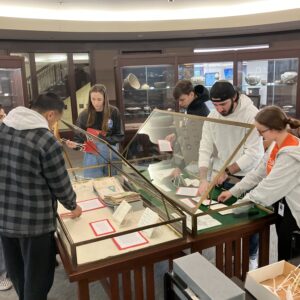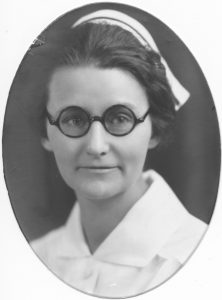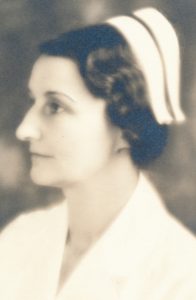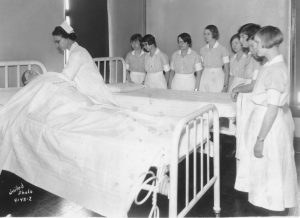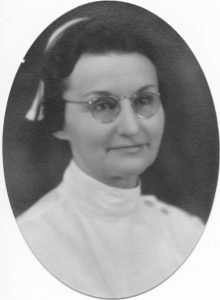Students in Joanne Diaz’s Survey of English Poetry class visited the archives multiple times this semester to create an exhibit that showcases both material from IWU collections as well as commonplace books created by their classmates throughout the semester. The students explored commonplace books, scrapbooks, diaries, and notebooks donated by IWU faculty and alumni. They made connections between archival material and their own commonplace books and selected items to feature in their exhibit. Items selected include a Civil War diary kept by early IWU President William H. H. Adams and a scrapbook assembled by IWU alumna Florence Kasiske (Class of 1933).
Once selected, the students wrote exhibit labels and created flyers and promotional images for social media. On Wednesday, December 6, the students installed the exhibit in the rotunda cases on the entry level of the Ames Library. Through this exercise, students had the opportunity to interact with archival material, while learning about exhibit curation and IWU history.
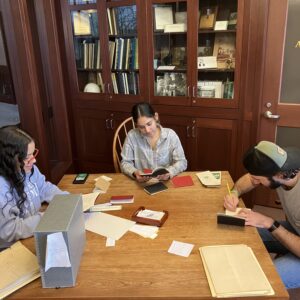
English 243 students curate an exhibit using archival material and student-created commonplace books.
The exhibit will remain on display through January 31, 2024. Thank you for sharing your work with us, English 243!

